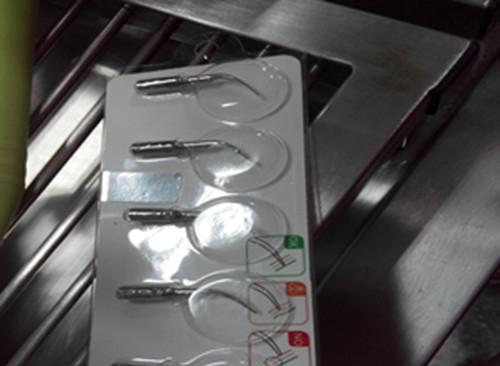Ultrasonic dental scaler for pets
Teeth cleaning for dogs and cats is used more and more in clinical practice. By daily cleaning teeth for pets, many oral diseases of dogs and cats can be prevented and treated.
1. Preoperative preparation before cleaning
Because cleaning teeth for dogs and cats requires anesthesia, the preoperative examination is basically similar to the general surgical examination process, mainly including:
1. Before cleaning teeth, preoperative examinations are required, including blood routine, biochemistry, etc.
2. Fasting for at least 4 hours before surgery and 2 hours without water
3. Device for indwelling needle
2. Tooth cleaning steps
1. The connection of the scaler, after the connection is made, ensure that the scaler operates normally.

Probes of different specifications equipped with the scaler
tartar filled teeth
2. Anesthesia
Anesthesia was maintained with domidine, intravenous injection, endotracheal intubation, and isoflurane
4. Scaling
When scaling, keep the probe parallel to the teeth and stay on each tooth for no more than 15 seconds. If there is too much tartar, you can clean some first, then clean other teeth, and then go back to clean the uncleaned teeth.
5. Polish your teeth after washing
Polishing the cleaned teeth, after cleaning, the surface of the teeth will be uneven.
6. Plaque display
If plaque is present on the teeth, the exposed display stick will appear pink on the teeth when applied to the teeth.
7. After cleaning the teeth
To inject antibiotics, there will be a small amount of bleeding during the cleaning process, which needs to be injected to prevent infection
3. Why do you need to clean your teeth
1. Remove tartar
The production of dental calculus begins with very thin, shallow, and neglected dental plaque, which is a transparent, viscous liquid composed of bacteria (consisting of mucin, exfoliated epithelial cells, and Gram-positive aerobic cocci).
2. The pet has symptoms such as bad breath, decreased appetite, pain, etc.
3. The pet has gingivitis, molar abscess, premature tooth loss, looseness, etc.
4. Teeth cleaning and extraction
Dental cleaning is to remove plaque and calculus from the surface of the teeth. Before removing the calculus, the oral health should be checked in detail, and the condition of the teeth should be recorded at the same time.
If the deciduous teeth of puppies are not completely lost, the extraction of the deciduous teeth is required.
V. Introduction of Duomijing
Domidine is an anesthetic that is dosed according to body surface area (BSA), which is very important for small dogs during anesthesia.
